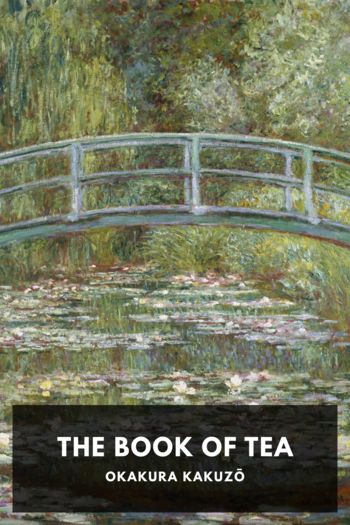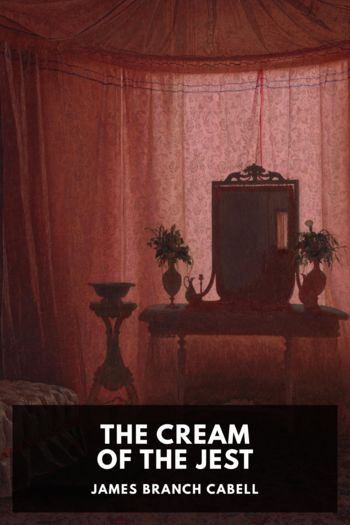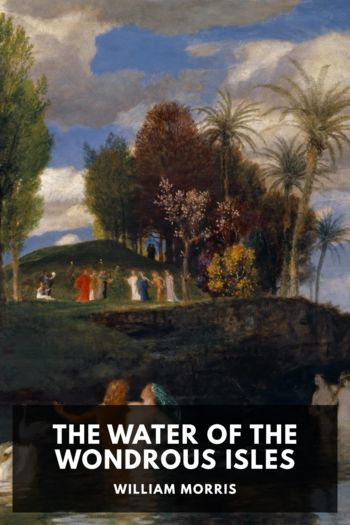Chocolate Sarah Moss (best fantasy books to read .txt) 📖

- Author: Sarah Moss
Book online «Chocolate Sarah Moss (best fantasy books to read .txt) 📖». Author Sarah Moss
There is a long history of child labour in cacao production. Youthful toilers on a lime and cocoa estate, Dominica.
This shift in chocolate economics did not go unnoticed among chocolate consumers. As one aspect of its absorption into national fantasies, chocolate became a lens through which Europeans could view their empires. Late colonial powers Germany and Belgium in particular emphasized the blackness of chocolate. Chocolate-covered cream confections became known as Negerküsse (‘negro kisses’) (a term borrowed, incidentally, from the French) and Mohrenkopfe (‘moor’s heads’), names which they carried until quite recently in both Germany and the Netherlands. The German brand Sarotti is symbolized by the ‘Sarotti Moor’, which remains to this day one of the most widely recognized brands in Germany. The figure, introduced in 1918 – not accidentally around the same time Germany lost its colonies – shows a black-skinned servant in Moorish robes. In earlier times the figure was also racially exaggerated with bulging eyes and large red lips. While the image made reference to the firm’s first residence in Berlin’s Mohrenstrasse (Moor street), its popularity had far more to do with Germany’s colonial longings and fantasies. As an interesting footnote, the ‘Moor’ was transformed in 2004 into Sarotti’s ‘magician of the senses’– given lighter skin and had his serving tray replaced by ‘magic’ stars – replacing racial fantasies about servile Africans with equally racialized fantasies about the sensual and magic East. Similarly, the Belgian chocolate manufacturer Charles Neuhaus lent the name Côte d’Or to his new chocolate firm after returning from a trip to the African territory (Gold Coast) in 1883 to source cacao for it. The resulting label for Côte d’Or chocolate featured a mishmash of exotic symbols of Africa: an elephant, a pyramid and a palm tree, only the last of which in any likelihood was actually to be found in West Africa. The company (now a division of Kraft Foods) still proudly displays these symbols, particularly the elephant, now as evidence of the ‘exotic experience’ and, paradoxically, the enduring tradition of their chocolate.
Map of the chocolate world, 1903. Ten years later, the bulk of production had moved to West Africa.
The Sarotti Moor.
While chocolate wrappers and advertisements associated the product to European consumers with fantasies of the exotic realms where cacao was cultivated, on occasions when the finished products arrived back in Africa (which is to this day relatively rare), they did so as the essence of metropolitan refinement and the civilizing influence of empire. A popular image from the German colonial adventure shows colonists making themselves ‘at home’ in Africa with well-known German products, notably Mumm sparkling wine and Stollwerck’s chocolates. In a less optimistic mood, an advert for Fry’s from around the turn of the twentieth century shows a crate of chocolate washed ashore on an African coast from a wrecked British ship (an ambiguous image at best, given Fry’s association with the Royal Navy), surrounded by dark-skinned natives marvelling at the new product. At ‘home’ as well, chocolate showed Europeans the benevolence of empire. The popular chocolate-banana drink Banania in France is advertisedwith a smiling Senegalese soldier exclaiming ‘Y’a bon’ (‘that good’) who at once embodies the ‘black power’ of chocolate and the benevolent, civilizing influence of empire.
‘Christmas in Cameroon’: Chocolate returns to Africa as a luxury treat for German colonists, alongside German sparkling wine.
Colonial fantasy was also repeatedly pierced by bitter reality. Slave labour, especially performed by Africans enslaved and transported across the Atlantic, had become a fundamental part of cacao cultivation over the course of the eighteenth century, particularly in the Caribbean and eastern side of South America. Opponents of the slave trade had long noted its connections with the chocolate industry, and Quaker industrialists such as Cadbury had long worked to eliminate it. Abolition was a long, slow, complicated process that continued throughout the century. While the slave trade was outlawed relatively early in the century, either dejure or de facto through British blockades and revolutionary strife, actual slavery was allowed to continue. Colombia ended slavery officially in 1851 and Venezuela (where, it will be recalled,landowners had rebelled in part to keep their slaves) in 1854. The Portuguese did not outlaw it until 1875. In any event, as we shall see, the official abolition of slavery did not necessarily mean an end. Laws were often ignored or new, legalized systems of labour coercion were devised. As it was, enslaved labour continued to produce most of the cacao in Brazil into the 1880s, and it continued even later in West Africa. In many ways, slavery was not so much removed from the cacao trade but multiply re-placed. In one way, this is literally the case. As the transatlantic slave trade slowly dried up over the course of the century, territories in West Africa looked to find a replacement ‘commodity’ to export, and in-demand cacao was a more than likely candidate.
Chocolate goes back to Africa. A Fry s poster.
Along with cacao, the Portuguese had moved their system of forced labour





Comments (0)